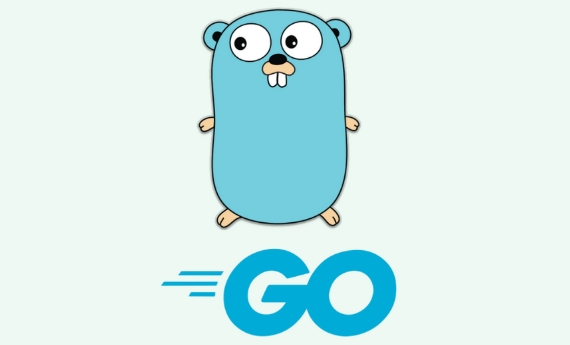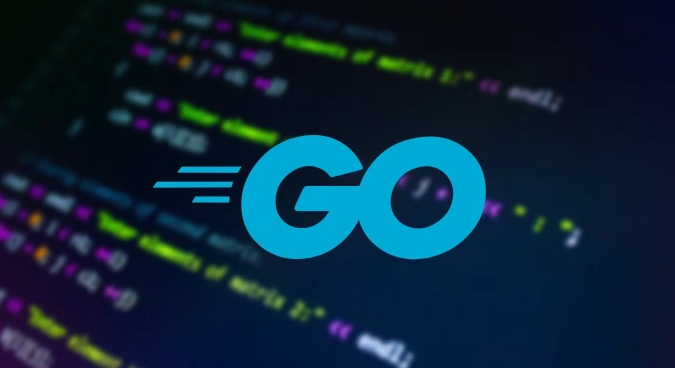 Backend Development
Backend Development
 Golang
Golang
 Choosing a Microservice Framework: KitEx/GoMicro vs Python Flask/FastAPI Approaches
Choosing a Microservice Framework: KitEx/GoMicro vs Python Flask/FastAPI Approaches
Choosing a Microservice Framework: KitEx/GoMicro vs Python Flask/FastAPI Approaches
The choice of microservice framework should be determined based on project requirements, team technology stack and performance expectations. 1. Given the high performance requirements, KitEx or GoMicro of Go is given priority, especially KitEx is suitable for complex service governance and large-scale systems; 2. FastAPI or Flask of Python is more flexible in rapid development and iteration scenarios, suitable for small teams and MVP projects; 3. The team's skill stack directly affects the selection cost, and it will continue to be more efficient when it has accumulated Go. The Python team's rash conversion to Go may affect efficiency; 4. The Go framework is more mature in the service governance ecosystem, suitable for medium and large systems that need to connect to advanced functions in the future; 5. A hybrid architecture can be adopted according to the module, without having to stick to a single language or framework.

When choosing a microservice framework, many people are confused about using Go KitEx or GoMicro, or Python's Flask or FastAPI. In fact, the key depends on your project requirements, team technology stack and performance expectations.

Go frameworks are preferred for scenarios with high performance requirements
If your system has relatively high requirements for concurrency processing capabilities and response speed, such as to establish a high-concurrency order processing module or real-time data processing service, the advantages of Go language are very obvious. Both KitEx and GoMicro are designed for high performance, especially KitEx, which has been largely verified within bytes and are suitable for complex service governance. Go's native concurrency model (goroutine) is also more suitable for handling large numbers of concurrent requests.

- KitEx supports multi-protocol and plug-in architecture, suitable for medium and large projects
- GoMicro is lighter and suitable for quick and simple service
- If you already have the Go technology stack accumulation, it will be smoother to migrate or develop new services
In this case, Python's synchronization model will become a bottleneck. Even if FastAPI adds asynchronous support, the overall performance is still not as good as Go.
Rapid development and iteration, Python may have more advantages
If your project requires quick trial and error, frequent updates, or the functions themselves do not involve too many compute-intensive tasks, such as doing a backend management system, a small API interface service, or an MVP (the smallest feasible product), then using Flask or FastAPI is more flexible.

- FastAPI comes with document generation and type checking, and has high development efficiency
- Although Flask is more basic, it has a rich ecosystem and many ready-made plug-ins are available.
- Python is simple to write, easy to debug, suitable for small teams to get started quickly
Moreover, in machine learning, data analysis and other scenarios, Python has natural advantages. Many AI-related services are encapsulated and provided external interfaces based on FastAPI.
Team skill stack determines the cost of technology selection
If the team is already familiar with Go, it is natural to continue using KitEx or GoMicro; but if you focus on Python and insist on turning to Go, the initial learning cost and development efficiency decline may not be worth the cost.
For example: A startup company that is just starting out has all the back-end engineers in Python. At this time, it will affect the pace of online use. On the contrary, if you are building a team from scratch and have performance pursuits, choosing the Go system framework directly will be more conducive to long-term maintenance.
Microservice ecology and integration capabilities are also considerations
KitEx and GoMicro have complete component support in service discovery, load balancing, and configuration center, which is especially suitable for medium and large systems. Although Python also has tools like Nameko and Connexion, its maturity is slightly lower in enterprise-level service governance.
If your system needs to consider advanced functions such as service mesh, link tracking, and flashover current limit in the future, the Go framework is easier to connect with ecological tools such as Istio, Prometheus, and Jaeger.
Basically that's it. Choosing a framework is not a black or white thing, the key is to match the actual needs of the current stage. Sometimes it is not a choice to the end. You can use different languages and frameworks according to modules and take the mixed architecture route.
The above is the detailed content of Choosing a Microservice Framework: KitEx/GoMicro vs Python Flask/FastAPI Approaches. For more information, please follow other related articles on the PHP Chinese website!

Hot AI Tools

Undress AI Tool
Undress images for free

Undresser.AI Undress
AI-powered app for creating realistic nude photos

AI Clothes Remover
Online AI tool for removing clothes from photos.

Clothoff.io
AI clothes remover

Video Face Swap
Swap faces in any video effortlessly with our completely free AI face swap tool!

Hot Article

Hot Tools

Notepad++7.3.1
Easy-to-use and free code editor

SublimeText3 Chinese version
Chinese version, very easy to use

Zend Studio 13.0.1
Powerful PHP integrated development environment

Dreamweaver CS6
Visual web development tools

SublimeText3 Mac version
God-level code editing software (SublimeText3)

Hot Topics
 How to install Go
Jul 09, 2025 am 02:37 AM
How to install Go
Jul 09, 2025 am 02:37 AM
The key to installing Go is to select the correct version, configure environment variables, and verify the installation. 1. Go to the official website to download the installation package of the corresponding system. Windows uses .msi files, macOS uses .pkg files, Linux uses .tar.gz files and unzip them to /usr/local directory; 2. Configure environment variables, edit ~/.bashrc or ~/.zshrc in Linux/macOS to add PATH and GOPATH, and Windows set PATH to Go in the system properties; 3. Use the government command to verify the installation, and run the test program hello.go to confirm that the compilation and execution are normal. PATH settings and loops throughout the process
 Go sync.WaitGroup example
Jul 09, 2025 am 01:48 AM
Go sync.WaitGroup example
Jul 09, 2025 am 01:48 AM
sync.WaitGroup is used to wait for a group of goroutines to complete the task. Its core is to work together through three methods: Add, Done, and Wait. 1.Add(n) Set the number of goroutines to wait; 2.Done() is called at the end of each goroutine, and the count is reduced by one; 3.Wait() blocks the main coroutine until all tasks are completed. When using it, please note: Add should be called outside the goroutine, avoid duplicate Wait, and be sure to ensure that Don is called. It is recommended to use it with defer. It is common in concurrent crawling of web pages, batch data processing and other scenarios, and can effectively control the concurrency process.
 Go embed package tutorial
Jul 09, 2025 am 02:46 AM
Go embed package tutorial
Jul 09, 2025 am 02:46 AM
Using Go's embed package can easily embed static resources into binary, suitable for web services to package HTML, CSS, pictures and other files. 1. Declare the embedded resource to add //go:embed comment before the variable, such as embedding a single file hello.txt; 2. It can be embedded in the entire directory such as static/*, and realize multi-file packaging through embed.FS; 3. It is recommended to switch the disk loading mode through buildtag or environment variables to improve efficiency; 4. Pay attention to path accuracy, file size limitations and read-only characteristics of embedded resources. Rational use of embed can simplify deployment and optimize project structure.
 Go REST API example
Jul 14, 2025 am 03:01 AM
Go REST API example
Jul 14, 2025 am 03:01 AM
How to quickly implement a RESTAPI example written in Go? The answer is to use the net/http standard library, which can be completed in accordance with the following three steps: 1. Set up the project structure and initialize the module; 2. Define the data structure and processing functions, including obtaining all data, obtaining single data based on the ID, and creating new data; 3. Register the route in the main function and start the server. The entire process does not require a third-party library. The basic RESTAPI function can be realized through the standard library and can be tested through the browser or Postman.
 Go interface{} vs any
Jul 11, 2025 am 02:38 AM
Go interface{} vs any
Jul 11, 2025 am 02:38 AM
In Go language, interface{} and any are exactly the same type. Since Go1.18, any has been introduced as an alias for interface{}. The main purpose is to improve the readability and semantic clarity of the code; 1. Any is more suitable for scenarios that express "arbitrary types", such as function parameters, map/slice element types, general logic implementations, etc.; 2. Interface{} is more suitable for defining interface behavior, emphasizing interface types, or compatible with old code; 3. The performance of the two is exactly the same as the underlying mechanism, and the compiler will replace any with interface{}, which will not cause additional overhead; 4. Pay attention to type safety issues when using it, and may need to cooperate with type assertions or
 Go select with default case
Jul 14, 2025 am 02:54 AM
Go select with default case
Jul 14, 2025 am 02:54 AM
The purpose of select plus default is to allow select to perform default behavior when no other branches are ready to avoid program blocking. 1. When receiving data from the channel without blocking, if the channel is empty, it will directly enter the default branch; 2. In combination with time. After or ticker, try to send data regularly. If the channel is full, it will not block and skip; 3. Prevent deadlocks, avoid program stuck when uncertain whether the channel is closed; when using it, please note that the default branch will be executed immediately and cannot be abused, and default and case are mutually exclusive and will not be executed at the same time.
 Go context.WithValue best practices
Jul 09, 2025 am 02:16 AM
Go context.WithValue best practices
Jul 09, 2025 am 02:16 AM
When using context.WithValue, immutable metadata within the request scope, such as user identity, request identity, etc.; it should not be used for parameter transfer or process control; 1. Appropriately pass meta information such as user ID, traceID, etc.; 2. Avoid abuse of transferring too much content such as database connection; 3. Use custom key types to prevent conflicts; 4. Do not modify the existing context value, and create a new context when it needs to be updated.
 How to build a web server in Go
Jul 15, 2025 am 03:05 AM
How to build a web server in Go
Jul 15, 2025 am 03:05 AM
It is not difficult to build a web server written in Go. The core lies in using the net/http package to implement basic services. 1. Use net/http to start the simplest server: register processing functions and listen to ports through a few lines of code; 2. Routing management: Use ServeMux to organize multiple interface paths for easy structured management; 3. Common practices: group routing by functional modules, and use third-party libraries to support complex matching; 4. Static file service: provide HTML, CSS and JS files through http.FileServer; 5. Performance and security: enable HTTPS, limit the size of the request body, and set timeout to improve security and performance. After mastering these key points, it will be easier to expand functionality.






